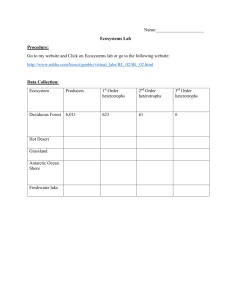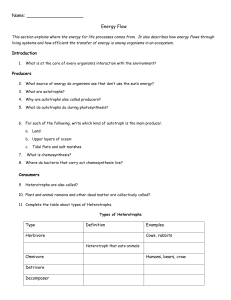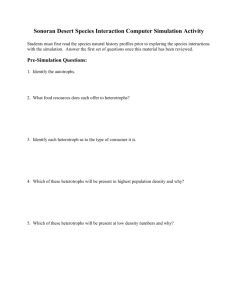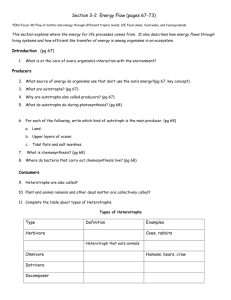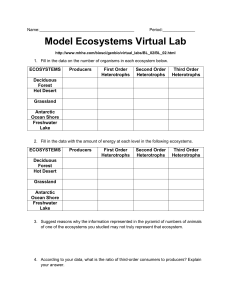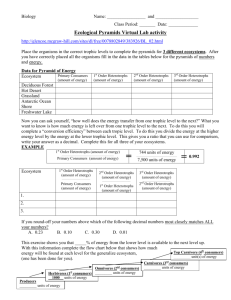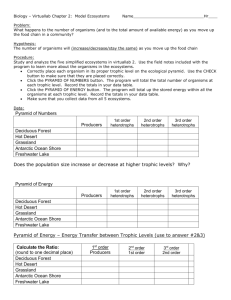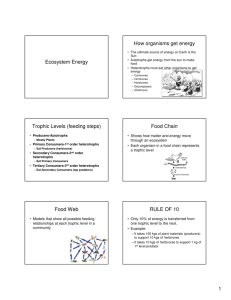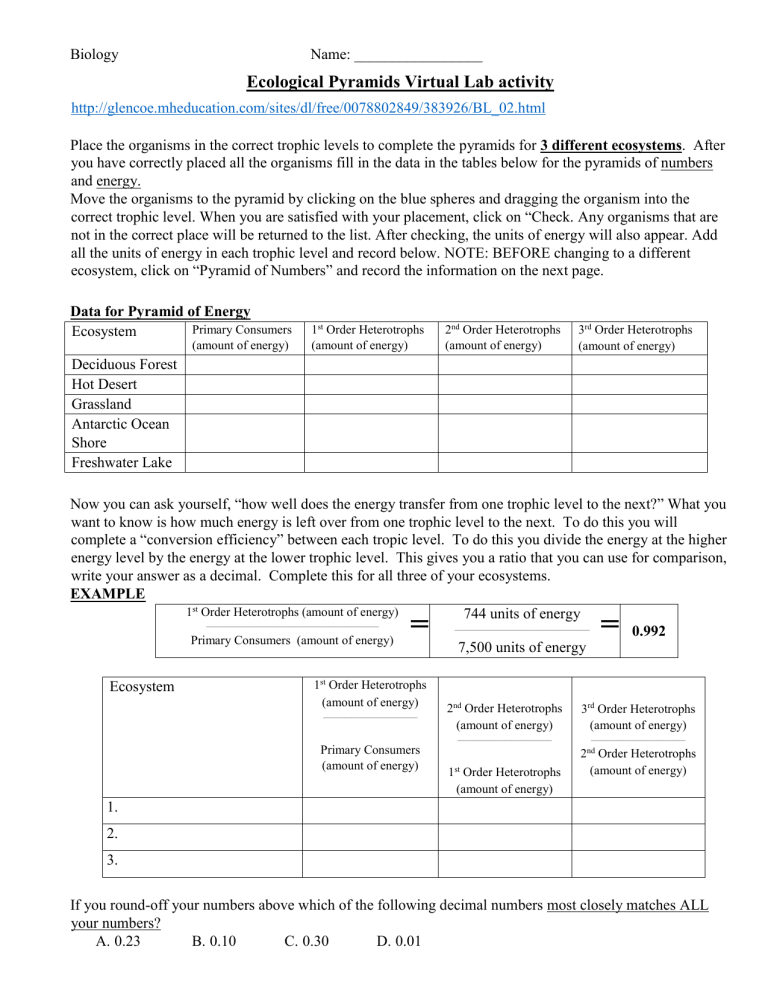
Biology Name: _________________ Ecological Pyramids Virtual Lab activity http://glencoe.mheducation.com/sites/dl/free/0078802849/383926/BL_02.html Place the organisms in the correct trophic levels to complete the pyramids for 3 different ecosystems. After you have correctly placed all the organisms fill in the data in the tables below for the pyramids of numbers and energy. Move the organisms to the pyramid by clicking on the blue spheres and dragging the organism into the correct trophic level. When you are satisfied with your placement, click on “Check. Any organisms that are not in the correct place will be returned to the list. After checking, the units of energy will also appear. Add all the units of energy in each trophic level and record below. NOTE: BEFORE changing to a different ecosystem, click on “Pyramid of Numbers” and record the information on the next page. Data for Pyramid of Energy Primary Consumers Ecosystem (amount of energy) 1st Order Heterotrophs (amount of energy) 2nd Order Heterotrophs (amount of energy) 3rd Order Heterotrophs (amount of energy) Deciduous Forest Hot Desert Grassland Antarctic Ocean Shore Freshwater Lake Now you can ask yourself, “how well does the energy transfer from one trophic level to the next?” What you want to know is how much energy is left over from one trophic level to the next. To do this you will complete a “conversion efficiency” between each tropic level. To do this you divide the energy at the higher energy level by the energy at the lower trophic level. This gives you a ratio that you can use for comparison, write your answer as a decimal. Complete this for all three of your ecosystems. EXAMPLE 1st Order Heterotrophs (amount of energy) 744 units of energy _______________________________________________________ ___________________________________________ 0.992 Primary Consumers (amount of energy) 7,500 units of energy = Ecosystem 1st Order Heterotrophs (amount of energy) ______________________________ = 2nd Order Heterotrophs (amount of energy) ______________________________ Primary Consumers (amount of energy) 3rd Order Heterotrophs (amount of energy) ______________________________ nd 1st Order Heterotrophs (amount of energy) 2 Order Heterotrophs (amount of energy) 1. 2. 3. If you round-off your numbers above which of the following decimal numbers most closely matches ALL your numbers? A. 0.23 B. 0.10 C. 0.30 D. 0.01 This exercise shows you that _____% of energy from the lower level is available to the next level up. Data for Pyramid of Numbers Primary Consumers Ecosystem (# of Individuals) 1st Order Heterotrophs (# of Individuals) 2nd Order Heterotrophs (# of Individuals) 3rd Order Heterotrophs (# of Individuals) Deciduous Forest Hot Desert Grassland Antarctic Ocean Shore Freshwater Lake Does the population size increase or decrease at higher trophic levels in the pyramid of numbers for all of your ecosystems? Explain your answer. What might happen to an ecological pyramid of numbers in a forest ecosystem if most of the deer were killed due to hunting by people and disease? What would happen to an ecosystem if the decomposers disappeared? Could there be a food chain without herbivores and carnivores?
